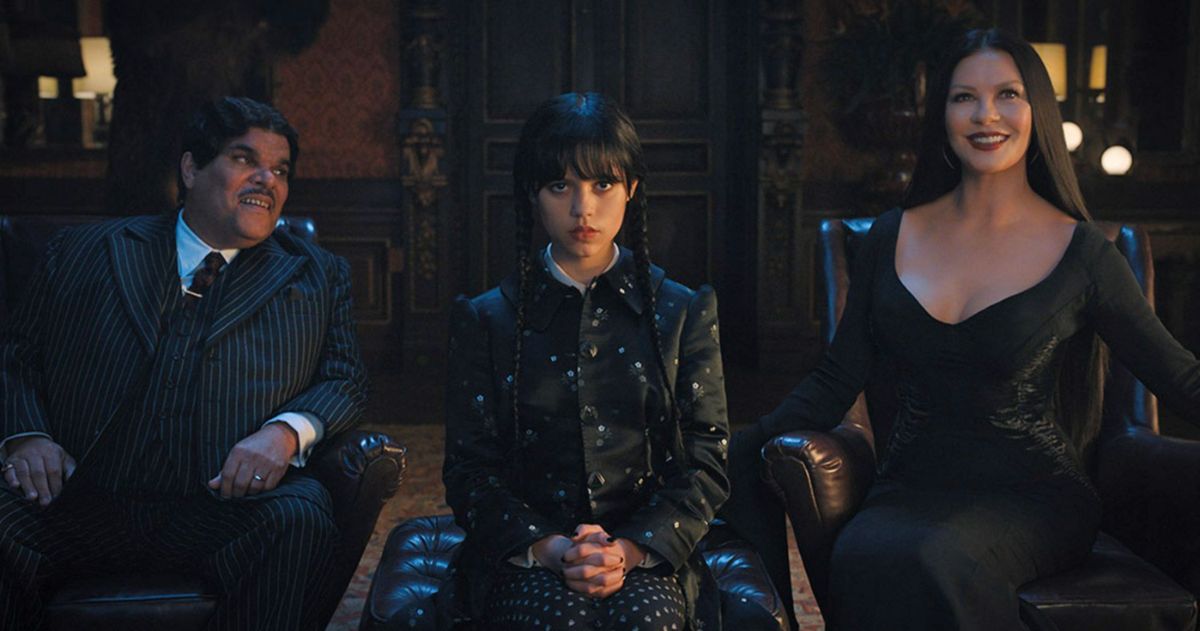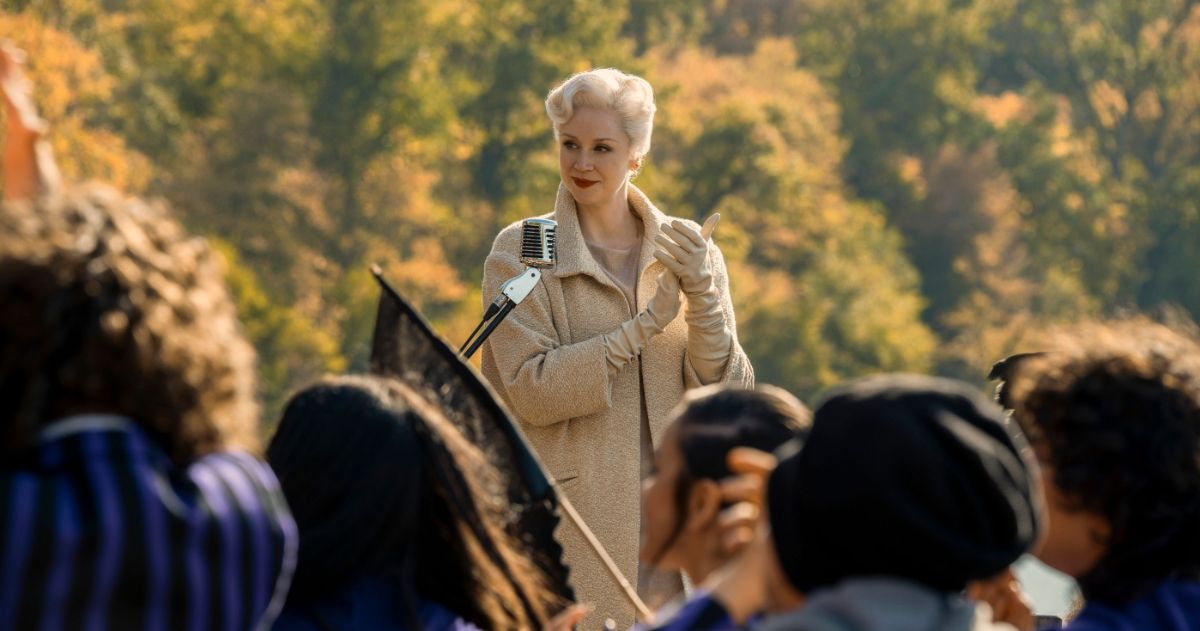With raving success and more views than Stranger Things in just one week, Wednesday gave new life to The Addams Family under Tim Burton’s watch. This time, the focus is their teenage daughter, Wednesday, brilliantly portrayed by Jenna Ortega. This creepy yet lovable family goes back a long way, dating from a comic from the 1930s that actually goes hand-in-hand with the casting of Netflix’s adaptation. Over time, there have been many TV and cinematic adaptations of the Addams’ quirky lifestyle, but this series’ rendition stands out in many ways.
Traditionally, the Addams Family’s values are depicted inversely. Anything too good or cute is considered awful for them, whereas sadism and torture are basically what give them joy. This remains untouched on Wednesday, but there is a certain shift in the surrounding society. The family was their own refuge from the outside world, which tended to frown upon their bizarre habits. Wednesday starts to break that barrier between the Addams and the world, probably as a symptom of how perceptions have changed in the last years.
A Different World for a Coming-of-Age Wednesday
The series revolves around Wednesday’s school year at Nevermore High, a place for “outcasts,” as they call them in the series. Estranged with her parents, the teenage girl breaks the Addams’ unity usually seen in other shows. Morticia (Catherine Zeta-Jones) and Gomez (Luis Guzmán) feel their daughter driving away in what would be a typical distance between teenagers and their parents. In an effort for her not to isolate herself (and after a dark-humored expulsion from her old school), Ortega’s character is sent to the place where Morticia and Gomez met and forged their relationship.
Nevermore works as a middle ground between society and outcasts. The Addams are no longer an isolated family of eccentrics but members of an elite of people with eerie powers or traits, such as werewolves, shape-shifters, and witches. With reminiscences of X-Men’s mutant academy but for rich kids, Wednesday is still a quirky gal, but her schoolmates are more inclined to her misanthropic charm rather than repelled by it, especially as the show progresses. Far from being perceived as normal, the Addams’ daughter looks more like a gothic Daria Morgendorffer.
Then, there are the “normies,” the series’ equivalent to the muggles in this world: the mayor, the sheriff, the folks from Jerico, the town close to Nevermore. The relationship between Jerico and Nevermore is far from ideal, with the former treating the latter as freaks while the outcasts play the occasional trick on the population. Of course, Wednesday is not the exception to the rule, frustrating the attempts of repairing this relationship with her macabre plans. Nevertheless, as the episodes go by, the girl is crucial in softening the sharp ends of these two worlds, proving that “normies” and outcasts can actually live in harmony.
Burton’s Duality on Acts’ Consequences
Burton’s Wednesday doesn’t differ much from previous portrayals when it comes to her cold-blooded preferences. The first scene from the series’ very beginning sets her tone quickly when she tries to avenge his brother by sending piranhas to his bully’s swimming pool practice. The dark comedy style of the series allows for it to be a funny depiction of an otherwise psychotic teenager attempting to murder a fellow student. This is something that the Addams’ universe allows, even with a more traditional society that presses charges on the incident.
Despite this, Wednesday is seldom punished for her straight-up crimes. Sheriff Galpin plays a major role in this, as he has a friend-foe bond with the girl who constantly tries to lead the investigation in Jerico’s spooky cases, stepping on Galpin’s territory. Wednesday’s methods are far from orthodox, but that’s when Burton’s duality shines on the screen. It’s not a matter of means justifying ends; it’s that right balance of cartoony and gory vibes that makes the story flow. The plot produces a warm environment for a more surreal style, where a cynical and fiendish girl can overcome the social awkwardness she can’t even acknowledge while facing the forces of evil.
All in all, Wednesday is further proof of why the Addams Family is still relevant today. Answering the initial question, Wednesday is as quirky as ever in this new representation, but it's the world around them that has changed since the last entries. The outcasts work as depictions of being different in a more conservative society that struggles to embrace the difference. This does not legitimize the Addams’ more gruesome habits but rather gives them a framework in which they can actually interact with society, as they mean no harm in the end.
Although devised for a more teenage audience, Wednesday appeals to a wider audience with its apparently ingenuous writing that can turn a teen drama into a dark satirical comedy that expands on this beloved family’s environment by bringing their adventures to the present time. Having left Disney behind proudly, Tim Burton takes a step in the right direction by extending the life of this creepy and kooky family.


.jpg)
